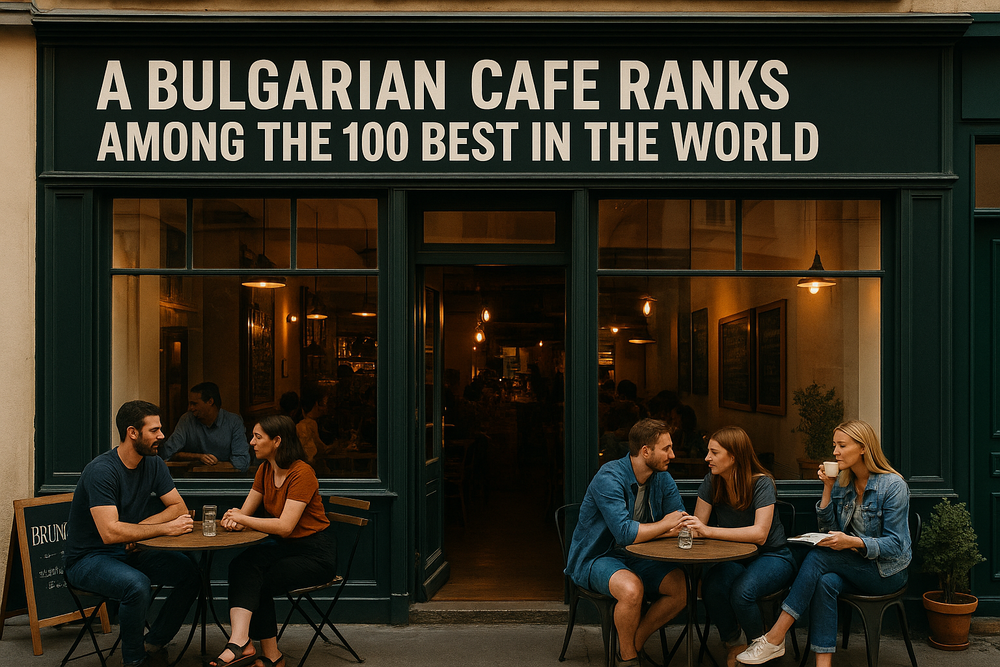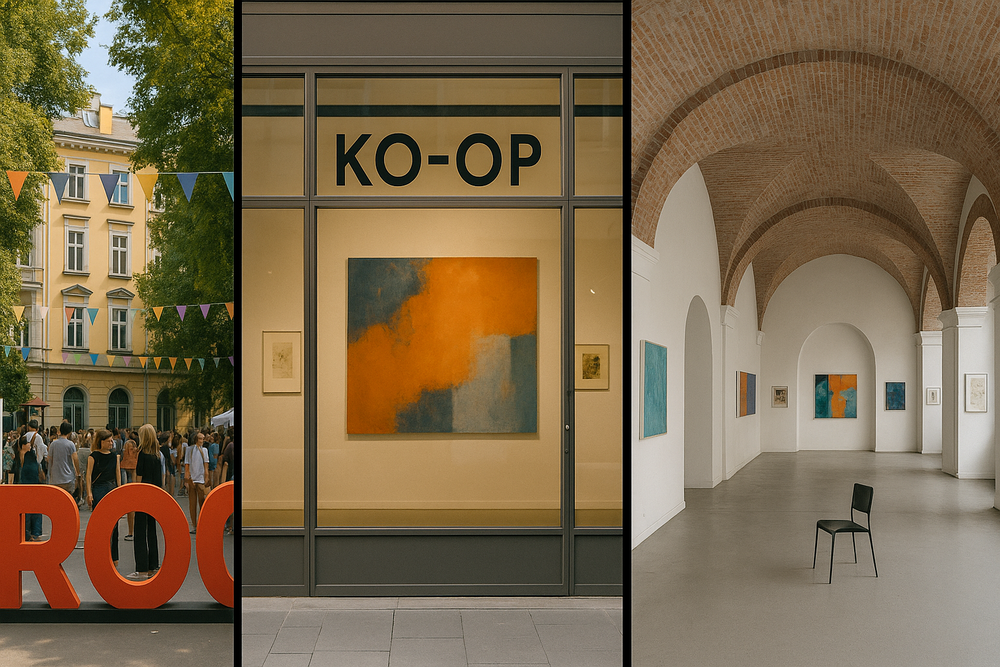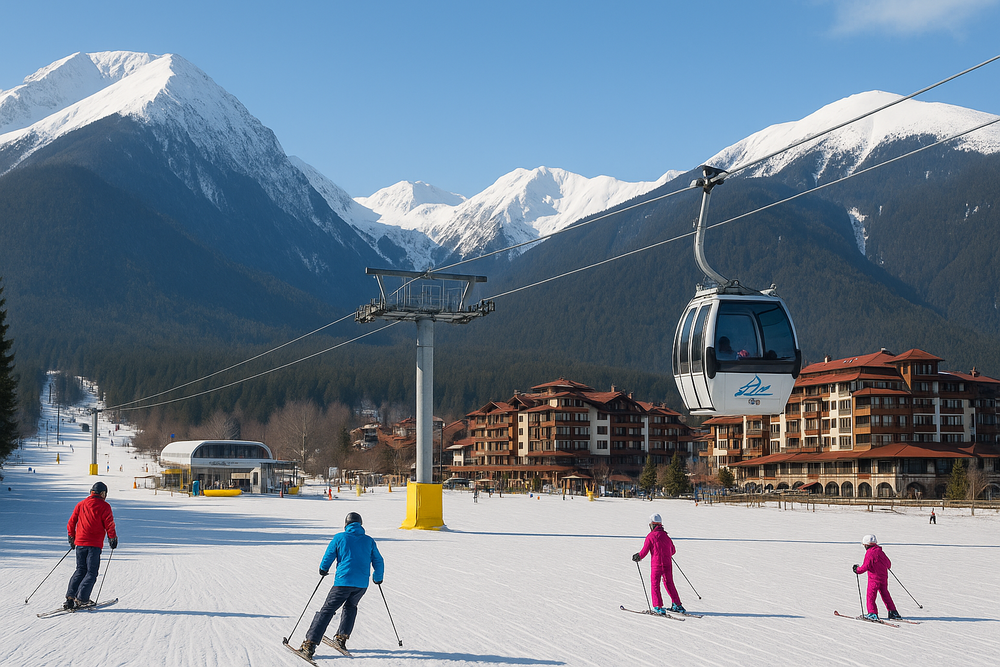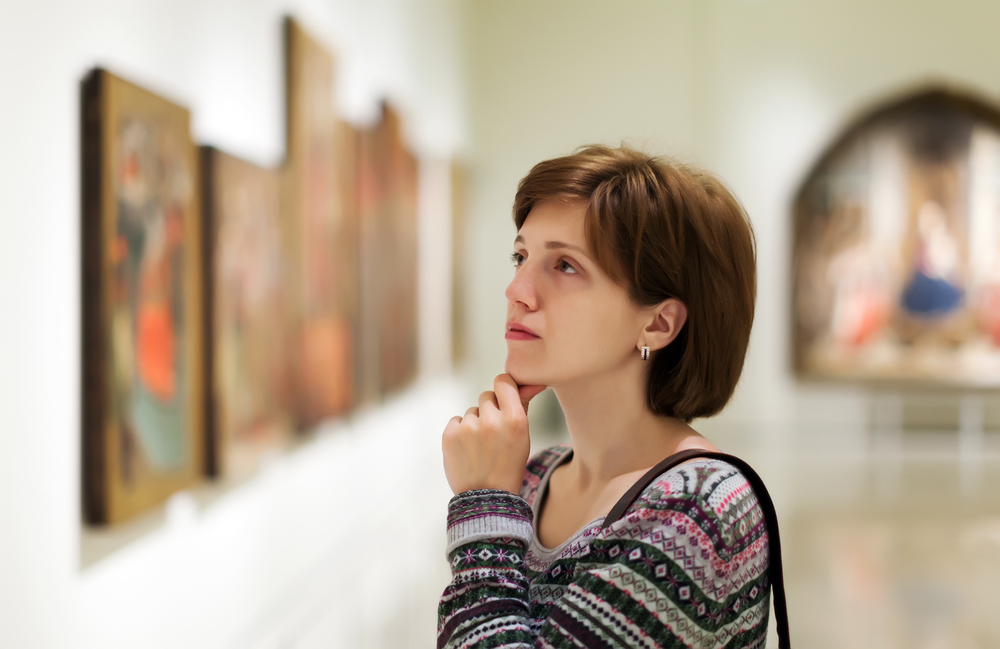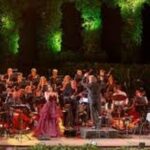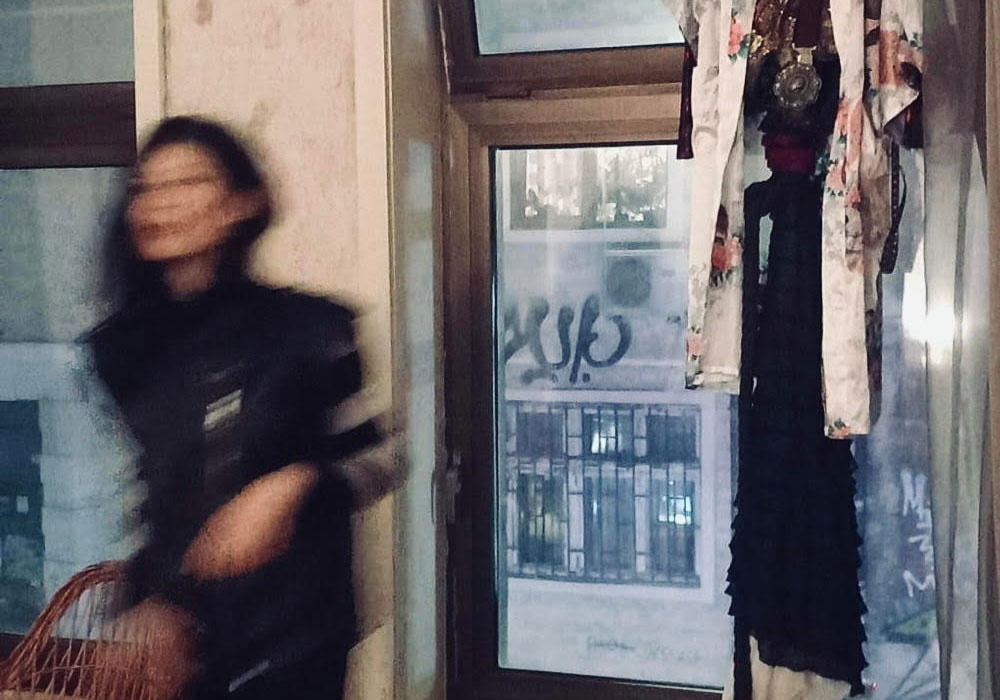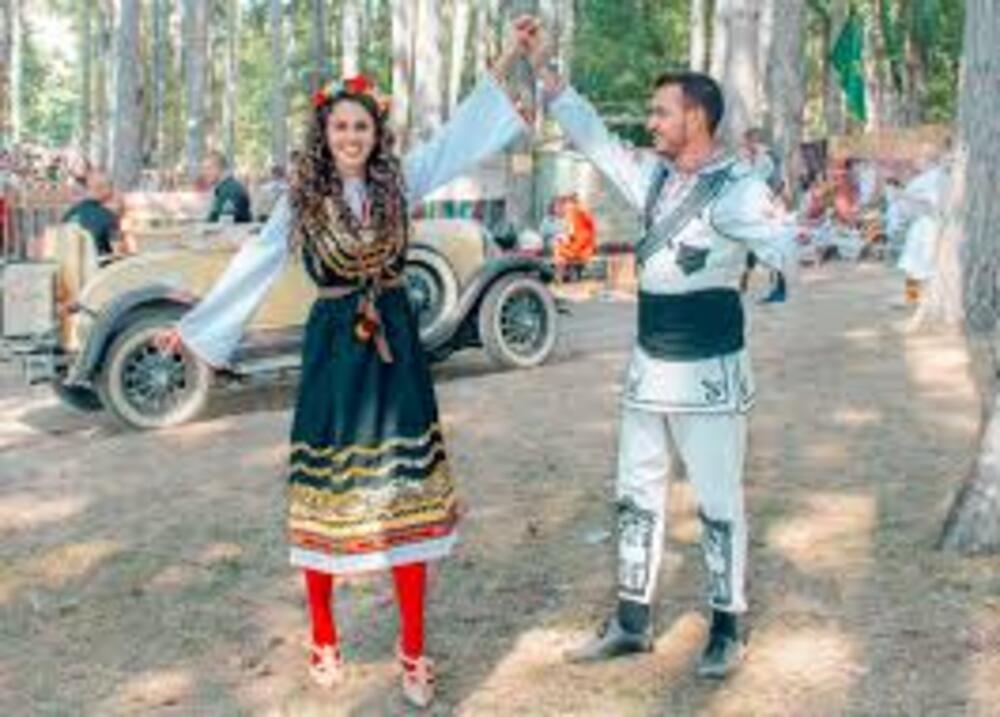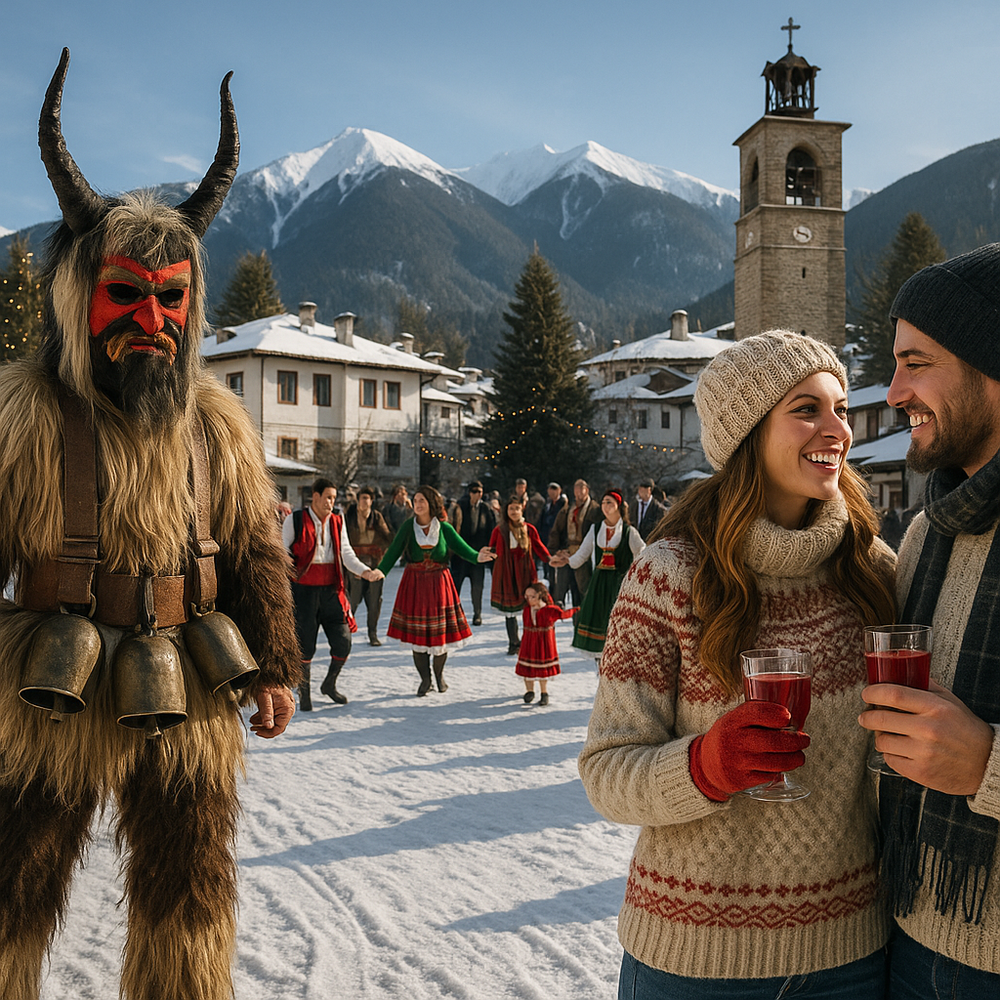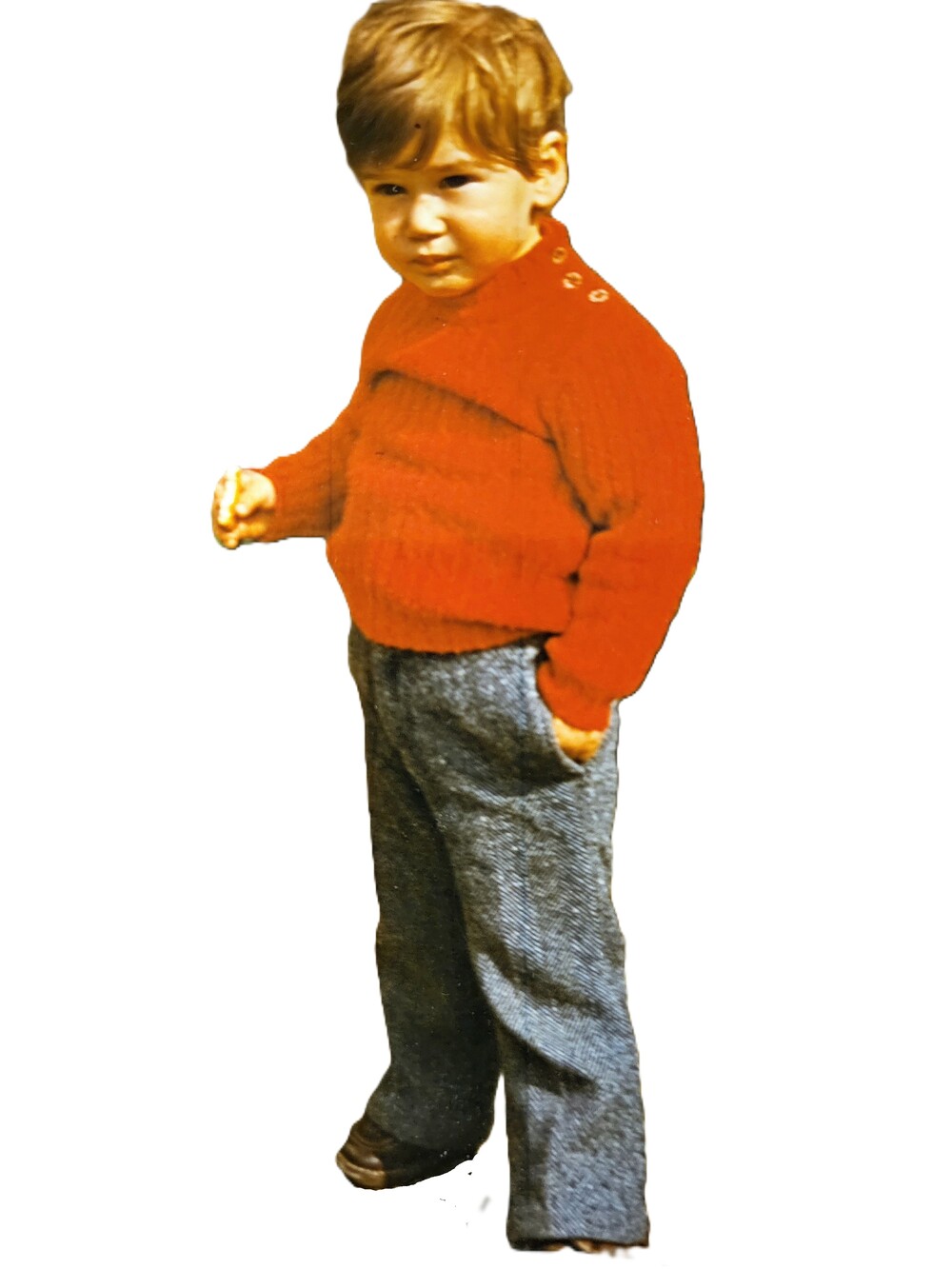
What inspired your move from Paris to Bulgaria back in 2012, and how has the change of environment influenced your creative process?
The reason I left Paris is that I met my future wife, who happens to be Bulgarian. She is a renowned journalist and writer, and had projects in progress while I was finishing mine. So we made the choice to come live in Bulgaria. In addition, I don’t have a particular career plan. I have almost always worked independently, so I did not see the point for her to restart a carrier in France. Also since I love to travel I found it interesting to deepen my knowledge of this country.
How would you describe the artistic atmosphere in Bulgaria compared to France? Are there any particular differences that surprised or inspired you?
Art is not very highly regarded in Bulgaria. Art has nothing to do with reproducing Nature, It is an education of the senses, to freedom, a way of thinking. In general in Bulgaria, people need to give a meaning to what they see (not only here, but more particularly here), which is for me a noun sense. Rather something touches you, rather it doesn’t the rest is just blathering. What is appealing if the intellectual process, not the fact that a boat do not look like a boat. Or that a mechanism made by Jean Tinguely is useless in everyday life. Of course that it is, Art is useless in the utilitarian sense in which it is understood.
By that I mean that there is not the same creative energy and madness that you can find in London, Brussels, Paris, NY, etc. The art that I have seen and that I see exhibited or presented here is often an art that is still anchored in the past, very figurative, academic or very brutalist. Be careful, this does not mean that there are no artists of value. Bulgaria’s artistic history is rich, but it’s buried in the nimbus of the past and seems to have difficulty re-emerged. So to answer your question, I found the artistic atmosphere sluggish and rarely exciting, or even outdated. In terms of street art or Pop Art, which concerns me more, tag or graffiti it’s very poor. No Blek the rat or Bulgarian Banksy, however there are very good interesting artists such as Dikov, stefan boshkov, Pavel Koychev or Yavor boyanov (to name a few) that I particularly appreciate.
Everything is different in Bulgaria, the mentality, the relationship with others, the vision of life and death, what is moral or not (I hate this word), religion, architecture, the vision of the world, openness to this world, etc… Despite all these antagonisms for a secular, free-spirited, Cartesian Parisian, the shock was brutal. It also allowed me to rethink what for me is/was obvious and to be inspired by the nonsense generated by a universe shaped by communist ideology by a certain conservatism.

Has the slower pace or specific rhythm of life in Bulgaria affected the way you approach your work?
This slower pace allows me to rethink my ideas, to sharpen them. I’m very slow to create to find the right way to express a subject in a path that I did not see, but once I get started, I don’t stop. In fact, what I miss the most in Bulgaria is the creative madness that exists in London or Berlin for example. This mix of getting a strong message across with a disconcerting lightness on pretty much every wall or art gallery.
Are there any elements of Bulgarian culture, architecture, or nature that have found their way into your collages or artistic thinking?
Very little. But I have decided to add more. Several years ago, I took photos of totally insane architectural places that I intend to use, but they must correspond to the problem of the subject I am denouncing and must be integrated into the pop-art spirit.
Which Bulgarian galleries, museums, or creative spaces do you find most exciting right now? Have any of them played a role in your recent projects?
The Museum of Socialist Art is a “must see”. Communist art (which is an oxymoron – how can one create in a regime where it is forbidden to think differently?-) makes you understand a lot about dictatorship and art and how some artists criticized the regime covered with flatteries. Of course, the National Art Gallery in Sofia, the Vladimir Dimitrov Museum of Art in Kyustendil. Unfortunately I must admit that Bulgarian museums are rather outdated, badly indicated, badly lighten etc. The works are often tangled one after the other without any real meaning, and the explanations concerning the work and its importance in a given time are very often sketchy. It tells a lot about how the State still did not understand what Art can bring to the country as an international reference, economic and touristic incomes. However, things are very slowly changing, but it’s very very slow.
Regarding the galleries I really like for their audacity are the Edna gallery, gallery Rakurci (which gave me the opportunity to exhibit in Sofia with a certain success), Kvardat 500, the national gallery of Sofia, the cultural center of the Maritine casino in Burgas (where I also exhibited).
Do you feel that living in Bulgaria has allowed you to experiment or evolve artistically in ways that might not have happened elsewhere?
I think that whatever environment you live in influences the way you think and create. My answer may seem terribly pretentious, and I apologize in advance because it is not my will, but Bulgaria allows me to see what I must not and don’t want to do (apart from a few Bulgarian artists who stimulate me like Yavor Boyanov). But that’s also how we move forward, by looking at others and asking ourselves how would I have done this or said this better? I have a very hard look at what I do, and I try to never repeat myself in the treatment of my subjects. I can talk about the same subject but I always have to find a new angle without ever saying to myself “will it be enjoyed” but rather “Was I able to express what I wanted?” Pop art is an art that, when it is successful, says things by having a playful and “fun” approach. Roy Lichtenstein is a master in this field, in addition to being a complete artist.
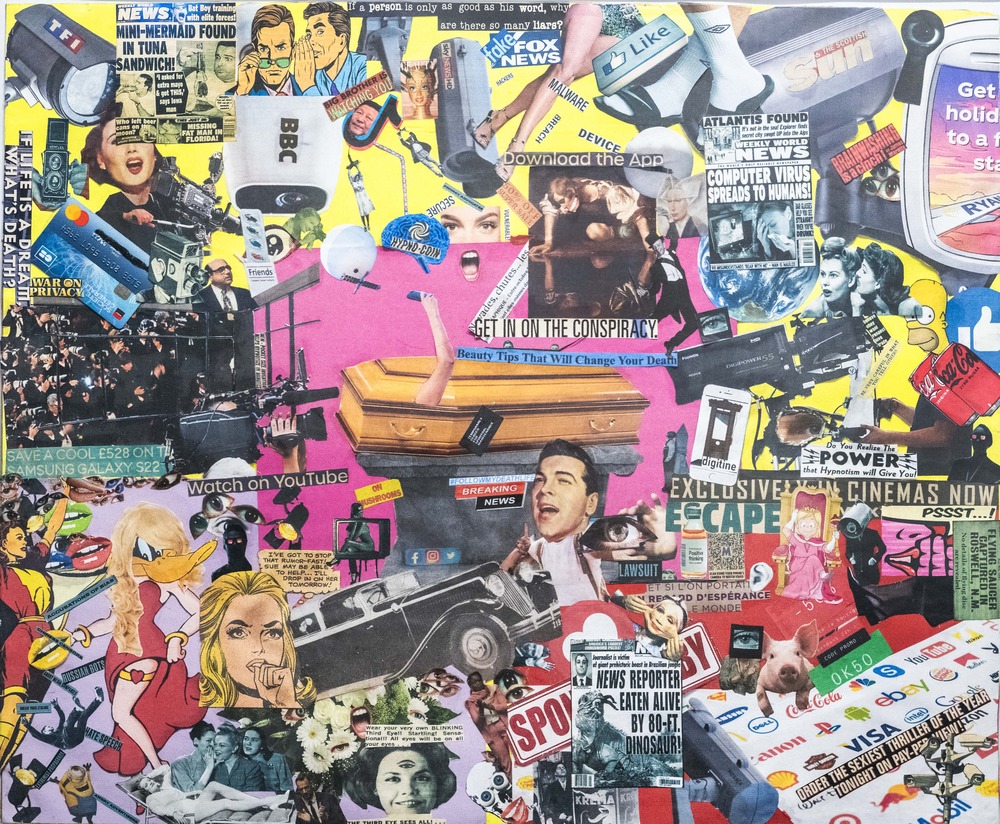 ZaïZaï | Funerals of an influencer
ZaïZaï | Funerals of an influencer
How do you usually begin working on a new collage? Do you follow a specific routine, or do ideas come more intuitively?
When I start a collage, there is always a very precise subject and an architecture thought out. Do I always succeed? No. It requires that I sometimes start over for days and using a repositionable glue and I create and recreate (at least I try) to play with colors, shapes, and rhythm. I wish I could do what Jacques Villeglé was doing and for whom I have an unspeakable admiration (he is one of the founders of new realism) who did not stick but took off and tore up the posters to create a work of art. All a rhythm and an extraordinary play of colors, and I am very inspired by his work, although mine has nothing to do with this great artist. The only intuition I use is more about the subjects to be dealt with, but again without ever telling myself :« will it please » but rather« how far can human stupidity go? » And believe me, it can travel very far. And if I create a reaction, bad or good, then I succeed in doing what I am aiming for.
What are you currently exploring in your artistic practice, and what kinds of materials or visual themes are drawing your interest these days?
Everything interests me in the field of street art and pop art. I am very admiring by the work of the photographer JR, by Invader in Swoon, and of course Banksy, Erro … I pass the list of great masters such as Keith Haring, Blek the Rat, Miss Tick, Roy Lichtenstein, even David Hockey, for their use of colors, technics, and collages. There are so many artists that I admire that I would not have enough space to name them all, and you might find me boring or worse to do some “name-dropping.” I started doing screen printing which I like a lot and allows me to repeat the same image but by changing the text (I am currently working on a series called: Nestor the Labrador (who is my dog) and who launches sentences or established truths (a bit like the graffiti artist Miss Tick) by playing on words and the effect of repetition with the same image, but different sentences create a comic effect which amuses me a lot. I also do a lot of stencil, which allows me to work with colors with mixed success. I still have to work in this area. In terms of collage, I try to do lighter things but always talking about political and social subjects. But it is quite hard lately I need to digest what I read, see, listen and in view of where the world is going, above all, I have a number of subjects that I don’t know where to turn.
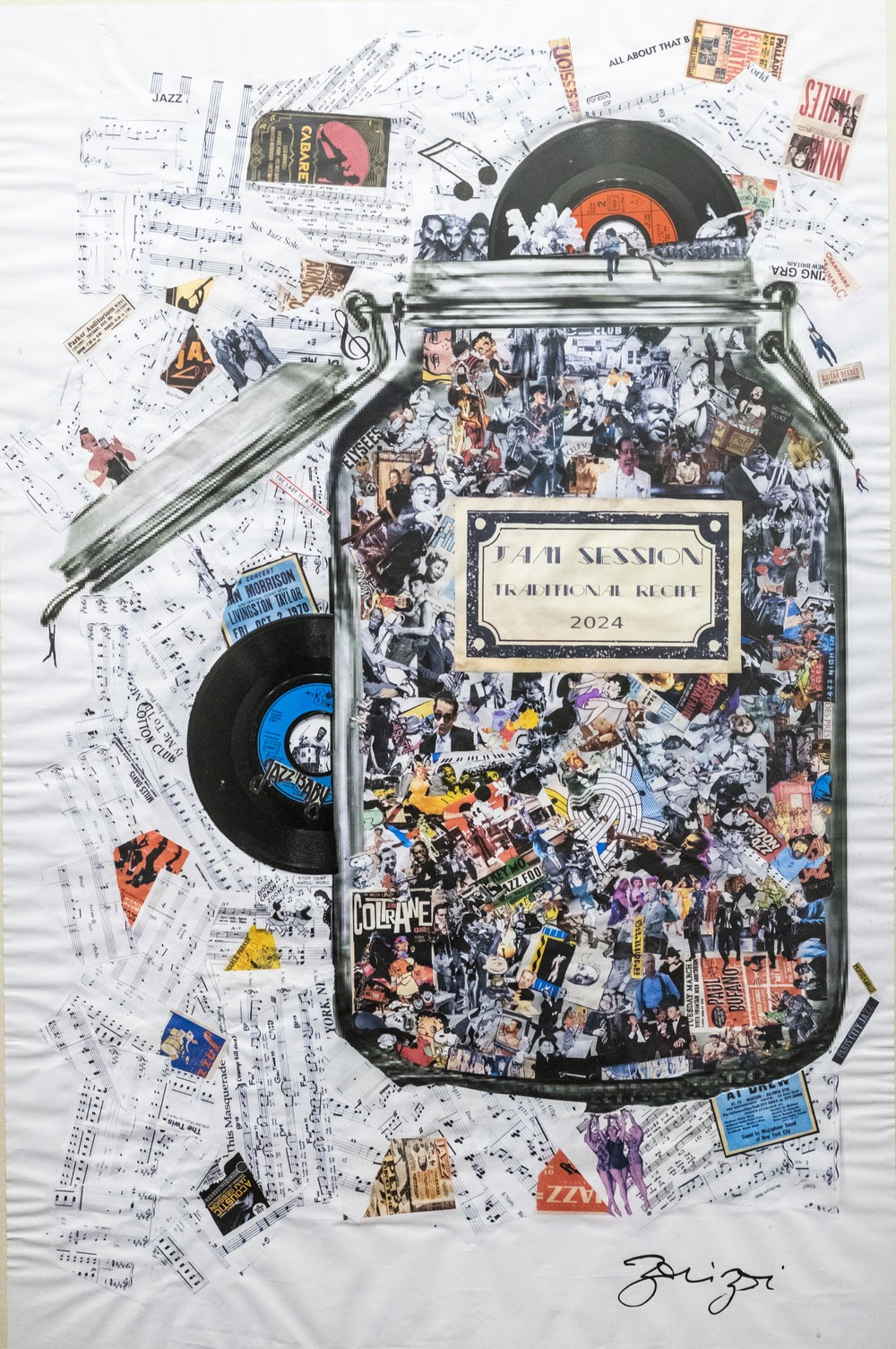 ZaïZaï | Jam session
ZaïZaï | Jam session
